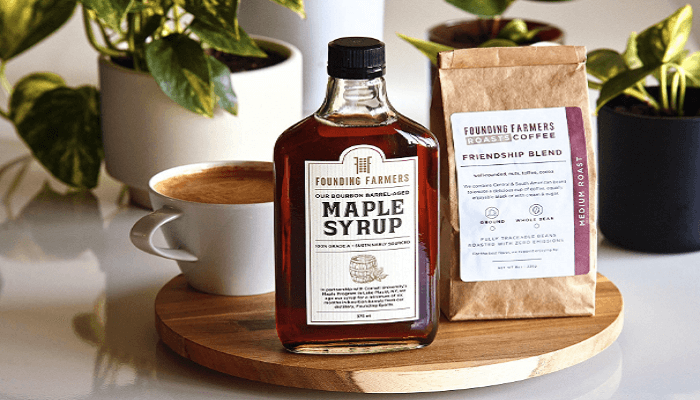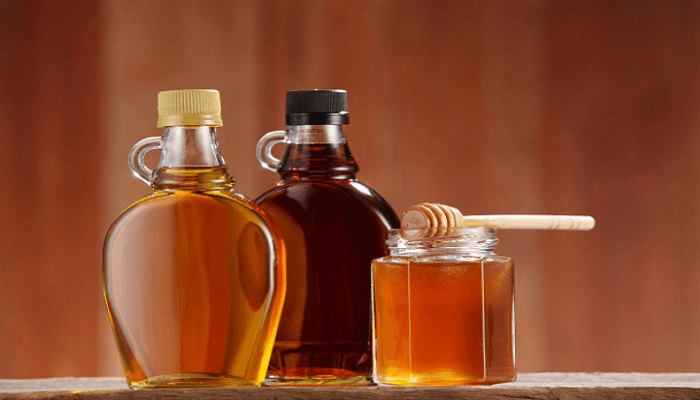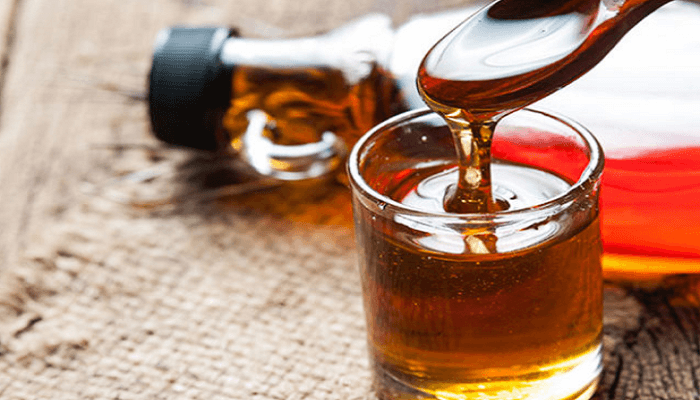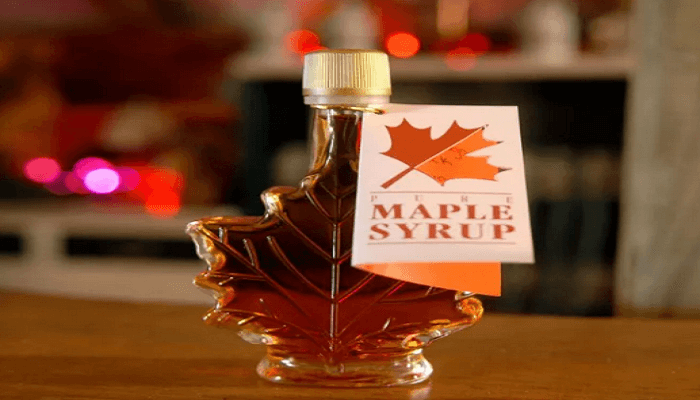Why is Maple Syrup So Expensive – Maple syrup is one of the most beloved natural sweeteners in the world. It has been used for centuries as a staple food and medicinal ingredient by indigenous peoples of North America.
However, it’s no secret that maple syrup is also one of the most expensive natural sweeteners on the market.
So why is maple syrup so expensive? In this article, we will explore the reasons behind the high cost of this delicious treat.
What is So Special About Maple Syrup?

Maple syrup is a natural sweetener that is made by tapping the sap of maple trees, collecting it, and then boiling it down to concentrate the sugar.
While there are many types of sweeteners available, such as sugar, honey, and agave, maple syrup has a unique flavor and texture that sets it apart from the rest.
One of the reasons that maple syrup is so special is its taste. Maple syrup has a rich, complex flavor that is difficult to replicate with other sweeteners.
The taste of maple syrup is influenced by many factors, including the species of a maple tree, the weather conditions during the growing season, and the production process.
As a result, every batch of maple syrup has a slightly different flavor, which adds to its charm and uniqueness.
Another factor that makes maple syrup special is its texture. Maple syrup has a thick, viscous consistency that allows it to cling to food and coat it evenly.
This texture is due to the high concentration of sugar and the natural gums and resins that are present in the sap.
Maple syrup is also unique because of its nutritional profile.
Unlike other sweeteners, which are often highly processed and stripped of their nutrients, maple syrup contains a range of vitamins and minerals.
Maple syrup is a good source of manganese, zinc, and calcium, which are important for bone health, and it also contains antioxidants, which can help to protect the body against oxidative stress.
In addition to its taste, texture, and nutritional value, maple syrup is also special because of its cultural significance.
Maple syrup has a long history of use in North America, dating back to the indigenous peoples who first discovered how to tap the sap of maple trees.
Maple syrup has since become an important part of Canadian and American cuisine and culture, and it is celebrated each year with festivals and events.
There are many reasons why maple syrup is so special. Its unique flavor, texture, nutritional profile, and cultural significance make it a beloved and treasured natural sweetener that is enjoyed by people around the world.
Why is Maple Syrup So Expensive
Maple Syrup Production Process
Maple syrup production is a labor-intensive process that involves tapping the sap of maple trees, collecting the sap, and then boiling it down to make syrup.
The sap is usually harvested in the late winter and early spring, and the timing and duration of the harvest are crucial to the quality of the final product.
Maple syrup producers need to carefully monitor the weather conditions and sap flow to know when to tap and how long to collect the sap.
The sap collected from maple trees is very thin and watery, and it takes about 40 gallons of sap to make just one gallon of syrup.
This means that a maple syrup producer needs to collect a large volume of sap to produce a relatively small amount of syrup.
Furthermore, the process of boiling down the sap is time-consuming and requires constant attention to avoid burning the syrup.
Maple syrup production is a labor-intensive process that requires a significant investment of time and effort.
Weather Conditions
The cost of maple syrup is highly influenced by the weather conditions of the production season. Inadequate weather can reduce the amount of sap that maple trees produce, resulting in lower yields and higher production costs.
For example, if there is a late start to the season or an early end, the sap flow can be disrupted, which can affect the amount of syrup that can be produced.
If the weather is too warm, the sap may stop flowing altogether, and the season will be cut short.
These factors can lead to a scarcity of maple syrup, which can drive up the price.
Maple Syrup Grades
Another factor that influences the cost of maple syrup is its grade. Maple syrup is graded based on its color and flavor, with darker syrups having a more robust taste and lighter syrups being milder.
The grading process is highly regulated, and each grade has specific characteristics that determine its quality and value.
The most commonly available grades of maple syrup are Grade A and Grade B. Grade A syrup is further classified into three sub-grades: light, medium, and dark.
Light and medium-grade syrups are typically more expensive than dark-grade syrups, as they are milder in flavor and more visually appealing.
Conversely, dark-grade syrups are less expensive but are often favored by people who enjoy a more intense maple flavor.
Geographical Location
The geographical location of maple syrup production also influences its cost. Most maple syrup production is concentrated in North America, specifically in the northeastern United States and Canada.
Maple syrup production is not limited to this area, other regions can produce high-quality syrup as well.
Producers in regions that are further from the traditional maple syrup production areas may face additional costs, such as transportation and labor.
This can drive up the cost of the syrup, making it more expensive for consumers.
The local demand for maple syrup can influence the cost of the product. In regions where maple syrup is highly prized and in demand, the price may be higher than in areas where it is less popular.
Market Demand
The market demand for maple syrup is another factor that can drive up its price. Maple syrup is highly prized for its unique flavor and health benefits, which has led to an increase in its popularity over the years.
As demand for maple syrup continues to grow, so does the price.
This increase in demand is driven by a number of factors, including changes in consumer preferences, the growth of the natural and organic food market, and increased awareness of the health benefits of maple syrup.
Furthermore, the popularity of maple syrup has also led to a rise in counterfeit or adulterated products.
To meet the growing demand for maple syrup, some producers may dilute the syrup with other ingredients or use synthetic flavorings to mimic the taste of real maple syrup.
This can undermine the quality of the product and erode consumer trust, which can impact the price of authentic maple syrup.
Sustainability and Environmental Factors
Sustainability and environmental factors also play a role in the cost of maple syrup. The production of maple syrup requires healthy and mature maple trees, which can take years to grow.
Over-harvesting or damage to the trees can impact their health and productivity, which can limit the amount of sap that can be harvested in future seasons.
Furthermore, climate change and environmental degradation can also affect the health of maple trees and the quality of the sap they produce.
Changes in weather patterns, temperature, and precipitation can disrupt the timing and duration of the maple syrup production season.
The use of pesticides and fertilizers can impact the quality of the sap and the health of the trees.
To address these concerns, many maple syrup producers are adopting sustainable and environmentally friendly practices.
This can include using organic fertilizers and pest control methods, ensuring the health of the trees, and using renewable energy sources to power the production process.
These sustainable practices can increase the cost of production but can also improve the quality of the product and reduce the impact on the environment.
Is Maple Syrup Healthier Than Honey?

When it comes to natural sweeteners, both maple syrup and honey are popular choices. While they are both natural and unrefined sweeteners, there are some differences in their nutritional profiles and health benefits.
Maple syrup is made by collecting the sap of maple trees and boiling it down to concentrate the sugar. It is a natural sweetener that contains antioxidants, vitamins, and minerals, including manganese, zinc, and calcium.
It is still a high-calorie sweetener and should be consumed in moderation.
Honey, on the other hand, is produced by bees from the nectar of flowers. It is also a natural sweetener that contains antioxidants, vitamins, and minerals, including iron and copper.
Honey has been used for its medicinal properties for centuries and has been shown to have antibacterial, anti-inflammatory, and wound-healing properties.
In terms of calorie content, maple syrup, and honey are similar, with both containing approximately 60 calories per tablespoon.
However, the glycemic index of maple syrup is lower than honey, which means that it is less likely to cause a spike in blood sugar levels.
When it comes to choosing between maple syrup and honey, it ultimately depends on personal preference and dietary needs. Both sweeteners are natural and unrefined and can be used in moderation as part of a healthy diet.
However, it is important to remember that they are still high-calorie sweeteners and should not be consumed in excess.
Is Maple Syrup Healthier Than Sugar?

Compared to refined sugar, maple syrup is generally considered to be a healthier alternative. Refined sugar, also known as table sugar, is made by extracting and purifying the juice from sugar cane or sugar beets.
It is a highly processed and refined product that is stripped of all its nutrients, fiber, and antioxidants.
In contrast, maple syrup is a natural sweetener that is made by tapping the sap of maple trees and boiling it down to concentrate the sugar.
Maple syrup is less processed than refined sugar and contains trace amounts of vitamins and minerals, such as manganese, zinc, and calcium.
Another reason why maple syrup is considered to be healthier than sugar is its glycemic index.
The glycemic index is a measure of how quickly a food raises blood sugar levels.
Maple syrup has a lower glycemic index than sugar, which means that it is less likely to cause a rapid spike in blood sugar levels.
However, it is important to note that maple syrup is still a high-calorie sweetener and should be consumed in moderation.
A tablespoon of maple syrup contains around 50 calories, which is roughly the same as a tablespoon of sugar.
Overconsumption of any sweetener, including maple syrup, can lead to weight gain and other health issues.
Conclusion: Why is Maple Syrup So Expensive
In conclusion, the high cost of maple syrup can be attributed to a combination of factors, including the labor-intensive production process, weather conditions, grading, geographical location, market demand, and sustainability and environmental factors.
While maple syrup may be expensive, it is also a unique and beloved natural sweetener that is enjoyed by people around the world.
As consumer demand for maple syrup continues to grow, it is essential that producers prioritize sustainable and environmentally friendly practices to ensure the health of the trees, the quality of the product, and the long-term viability of the industry.
